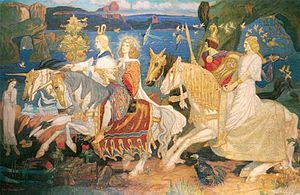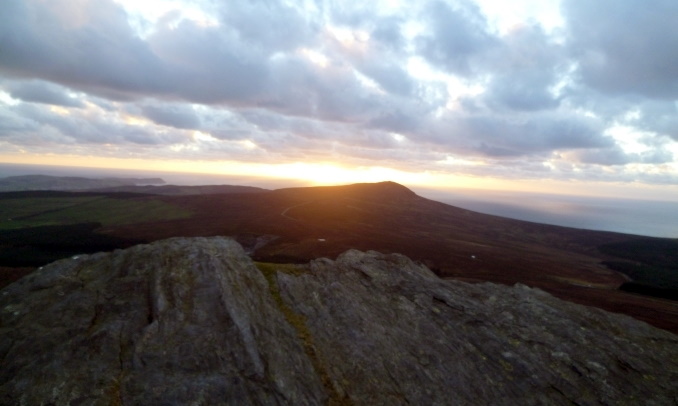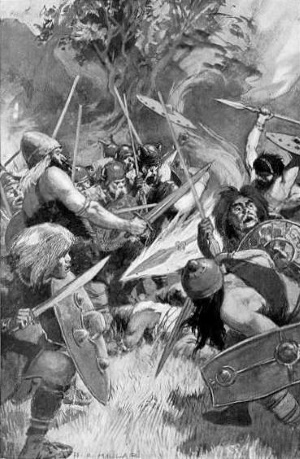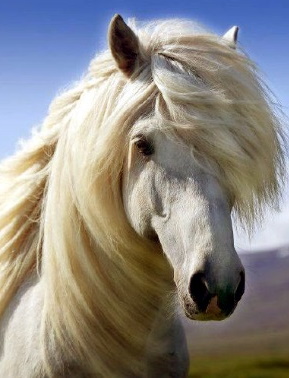Celtic God Lugh and Gaelic Festival of Lughnasadh

The name of the month of August in all three Gaelic languages is derived from the Celtic god Lugh (also known as Lug and in Modern Irish: Lú). In Modern Irish August is called Lúnasa, in Scottish Gaelic: Lùnastal, and in Manx: Luanistyn. At the beginning of the month Lughnasadh is celebrated. It is one of the four Gaelic seasonal festivals, along with Samhain, Imbolc and Beltane. The festival of Lughnasadh (also known as Lughnasad), is, like the month itself, named after the god Lugh. Traditionally held on the first day of August it was widely observed throughout Ireland (Éire), Scotland (Alba) and the Isle of Man (Mannin). Clearly Lughnasadh was regarded as an important pre-Christian festival and is mentioned in some of the earliest Irish literature.
August was seen as a time that marked the beginning of the harvest season. The Celtic year appears to have been driven mainly by agrarian concerns. The festival day is called Lá Lúnasa (Day of Lúnasa) in Irish or either Laa Luanistyn or Laa Luanys in Manx. There were a number of traditions associated with Lughnasadh in times gone by including ritual ceremonies, feasts and athletic competitions. These festivities were said to have been originated by Lugh himself and to have celebrated his deeds and those of members of his family, in particular his mother. Some festivals continue to be held specifically in celebration of Lughnasadh and others, including the Puck Fair, held in early August in the town of Killorglin, County Kerry (Irish: Cill Orglan, Contae Chiarraí) is believed to be a survival of a Lughnasadh festival.
Often the ceremonies to pay homage to Lugh took place on top of hills and mountains. They could also involve visits to holy wells or sacred springs, revered either in a Christian or pagan context, many of these wells can still be found throughout the Celtic lands and often now bear the name of Christian saints. Rituals, which have their origin with the celebration of Lugh, are still followed in many places. Over the years, with the arrival of Christianity, and in common with other Celtic festivals, attempts were often made to Christianise these events. An example of this is the Reek Sunday pilgrimage at Croagh Patrick which was eventually re-cast as a Christian pilgrimage. However, others in the Celtic countries still ascend to high ground to pay homage to the god Lugh Lamhfada (Lugh of the Long Arm).

There is little doubt that Lugh (also known as Lug and Lú) is one of the most prominent gods in Irish mythology. He has been described as god of arts, warriors, and sovereignty. Some have suggested a link to him being a type of sun god. Although he is associated with solar-like symbolism, there is no evidence of him being worshipped as a solar deity. In mythology he is associated with the Tuatha Dé Danann. They are Celtic pre-Christian gods with supernatural ability and were of great importance to Gaelic people. The Tuatha Dé Dananna are a significant feature in Irish, Scottish and Manx mythology. However, Lugh is also said to be part Fomorian, another supernatural race in Irish mythology and said to be malevolent opponents of the Tuatha Dé Danann. Lugh's mother is Eithne, daughter of Balor, a leader of the Fomorians. His father is Cian, son of Dian Cecht who was a Tuatha Dé Danann god of healing. Lugh was prophesied to kill his Fomorian grandfather Balor, and was adopted by Taltiu, a Fir Bolg queen. The Fir Bolg had been ancient rulers in Ireland before the arrival of the Tuatha Dé Danann.

It is also said that Lugh was also brought up and schooled by Manannán mac Lir. Manannán mac Lír was a god of the sea, ruler of the Otherworld and also keeper of the magic tools of the Tuatha Dé Danann. His home was said to be the Isle of Man, which many believe to be the place known as Emain Abhlach in Irish mythology which was seen as a mythical island paradise. Manannán was known to have been a great magician and was in possession of a number of enchanted items with astounding magical powers. Manannán taught Lugh many skills and to become a great warrior. Manannán had him trained with his own sons in the use of arms, and he learned to hunt and to fish, to run and to swim. He grew tall and strong and brave. However, the time came, with his people the Tuatha Dé engaged in war in Ireland, for him to return home. Manannán gave Lugh a number of his magical possessions to help him in this struggle, including his spear Sleá Bua ("spear of victory") and Manannan's magnificent horse Aonbharr (‘Enbarr of the Flowing Mane’).
He returned to Ireland to fight on the side of the Tuatha Dé Danann. Their King at the time was Nuada Airgetlam (Nuada of the Silver Arm). Nuada had his hand struck off by evil forces and Lugh took on an important role of leadership while Nuada had a new arm and hand made of silver. Lugh led the Tuatha Dé Danann to victory over the Fomorians in the second Battle of Magh Turedh (Tuired). Nuada was killed by the Formorian Ballor, Lugh’s grandfather. However, during this battle, as was prophesied, Lugh went on to kill Balor. By some accounts Lugh subsequently ruled for forty years.

He features and is named in a number of cycles and traditions in Irish mythology which give various accounts of his life and deeds. They include in the Leinster cycle of poems, specifically "Lugh sceith". Lebor Gabála Érenn. Cath Maige Tuireadh. Oidheadh Chlainne Tuireann. Compert Con Culainn. Táin Bó Cuailnge. "Ar an doirseoir ris an deaghlaoch". In the Ulster Cycle he is said to be the father of the legendary warrior and hero Cúchulainn. When Cúchulainn lay seriously wounded after an exhausting series of battles during the Táin Bó Cuailnge (Cattle Raid of Cooley), Lugh appeared and healed his wounds over a period of three days. Lugh’s name lives on in these legends, as well as in the month of August that is named after him and in the Gaelic festival of Lughnasadh which continues to be celebrated on the hilltops of Ireland, Scotland and the Isle of Man.
Content type:
- Pan-Celtic
Language:
- English






